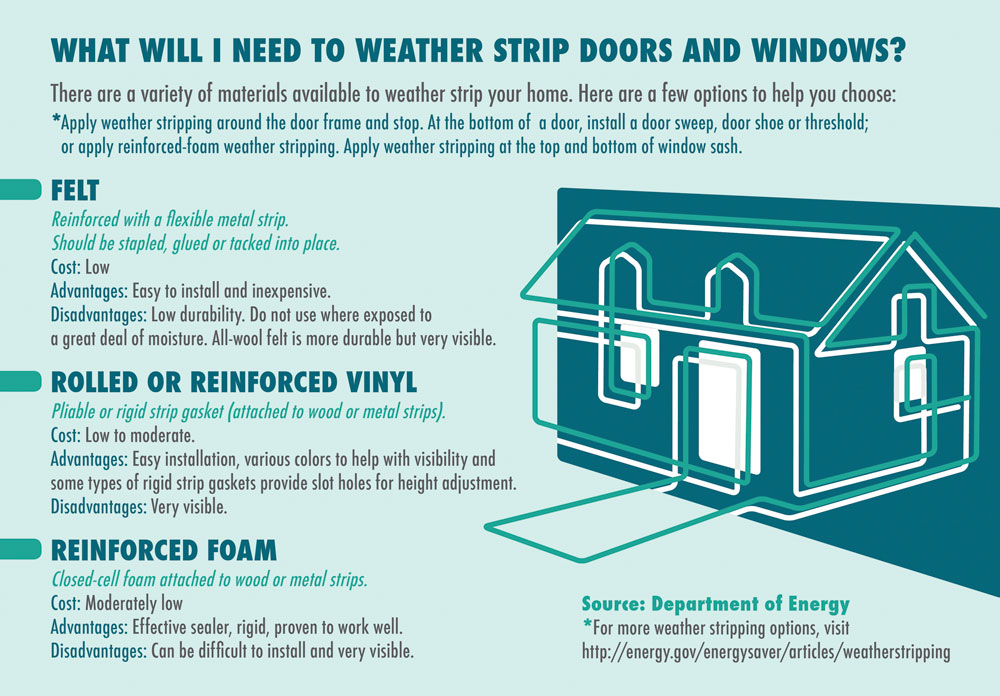Draft dodgers: Weather stripping your home
By Amber Bentley
There is no doubt about it; the cold weather is on its way. Not only is it important to make sure that your heating unit is working properly, but you should check your home to make sure that none of that heat is escaping.
When the weather turns colder, drafts around windows and doors are constantly letting in cool air. Most people will immediately want to raise their thermostat even higher; however, that will cause you to use more energy when you don’t necessarily need to. The best solution is to weather strip your home. This is typically an easy fix that will eliminate energy waste and help you save on your monthly electric bill.
Sometimes drafts are obvious, and other times the openings are much smaller. Here are two quick ways to find out if heat is escaping from your home. For doors, look for daylight between the door and its frame, if you see even a hint of light in between the two, you need to weather strip that area. For windows, place a piece of paper between the sash and the seal then close it. If you can remove the piece of paper from the window without ripping it, you need to weather strip that area as well.
The great thing about all of this is that weather stripping is easy! There is an assortment of materials available to you (like rubber, foam, metal, etc.) and they are all inexpensive. Once you have purchased what you need, keep the following in mind before you begin weather stripping: be sure the surface is dry and clean, measure the area more than once for best accuracy, and apply so that strips compress both sides of the window or door.
To weather strip windows:
- Place the stripping between the frame and the sash.
- Be sure that it compresses the window when shut.
- Check to make sure that the stripping does not interfere with the moving of the window.
To weather strip doors:
- Choose the proper sweeps and thresholds for your door.
- Weather-strip the entire door jamb.
- Make sure the stripping meets tightly at both corners.
- Use a thickness that allows for a tight press between the door and the ground, but one that does not make the door difficult to shut.
Roughly half of the energy that your home uses comes from heating and cooling. So the next time you feel an uncomfortable draft in your home, do not immediately crank up the heat. Check to find out where the draft is coming from and properly weather strip the area. This will ultimately save you more energy and more money in the end.
Amber Bentley writes on energy efficiency issues for the National Rural Electric Cooperative Association, the Arlington, Va.-based service arm of the nation’s 900-plus consumer-owned, not-for-profit electric cooperatives.





